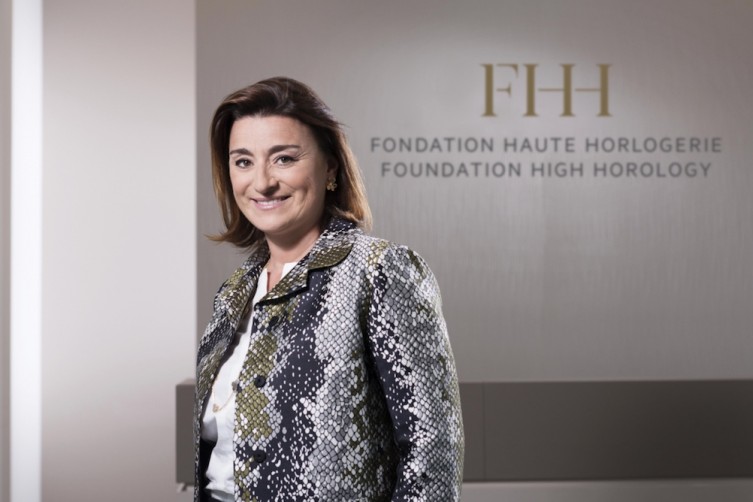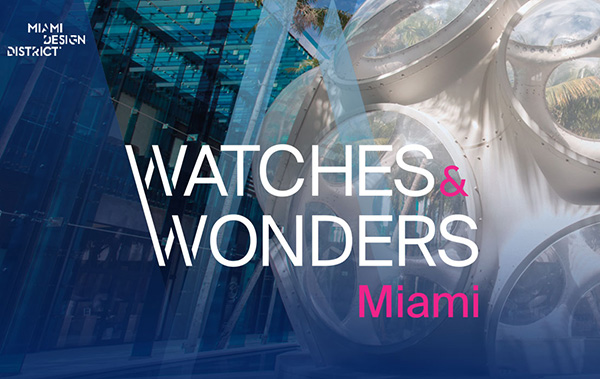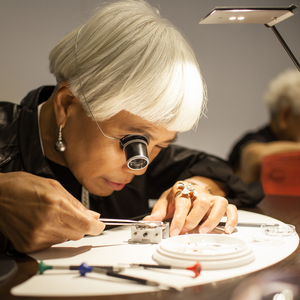 Photo Credit: Fondation De La Haute Horlogerie
Photo Credit: Fondation De La Haute Horlogerie
From its birth in 2005 until now, the Fondation de la Haute Horlogerie‘s (FHH) mission has been to “promote fine watchmaking worldwide, through four missions to inform, train, recognize and organize.” Its esteemed Chairwoman and Managing Director, Fabienne Lupo, sat down to with us during Watches & Wonders Miami, to discuss the FHH’s challenges, triumphs and what we can expect from the globally-renowned foundation in the coming years.
The Fondation Haute Horlogerie’s main mission is to promote fine watchmaking throughout the world. What are the main challenges in accomplishing this?
I would say the main challenges are the ones yet to come, as we develop our activity throughout the world. We are evolving in an environment that is constantly changing and we need to embrace these changes in order to meet the expectations of our 42 partner brands. Today, the FHH is mainly known in Europe and Asia thanks to our training programs. Moving forward, we need to develop our activities in the US and ensure we have a presence on a regular basis. Watches & Wonders Miami is a first step in this strategy.
 Photo Credit: Fondation de la Haute Horlogerie
Photo Credit: Fondation de la Haute Horlogerie
As Chairwoman and Managing Director of FHH, what does an average day look like, if there is such a thing?
Let’s say my average day is always very busy and I don’t have enough hours in a day, jumping from one meeting to another, discussing, negotiating, sharing, convincing, motivating, etc. I spend a lot of time with my team to develop our ongoing projects. We are always in a creative process, challenging ourselves to find new ideas and new ways to approach our programs. A big part of my day is devoted to bringing people together, building relationships and creating synergy. I’m doing all of this while trying to keep a balance between work and family.
The market/demand for watches has declined a bit recently, but is now showing signs of recovery. How do these market fluctuations affect the FHH and what measures do you take to keep watches relevant/in demand?
The business has shown signs of recovery with positive growth of 3% in 2017. The SIHH is held every year in January and is a real barometer for the industry that allows us to identify the trends. This year’s show was a very good one, not only in terms of attendance, which was up 20%, but also in terms of number and caliber of exhibiting Maisons.
What do you see as the biggest threat to fine watchmaking?
The biggest risk is that interest in fine watchmaking amongst the younger generation diminishes. This is why education and promotion are crucial. We must ensure that the next generation develops an understanding and appreciation for fine watchmaking. It is a profession of passion. We must strive to connect a younger generation to this passion. It is important that we adapt our messaging and our activities to better resonate with them.
 Photo Credit: Fondation de la Haute Horlogerie
Photo Credit: Fondation de la Haute Horlogerie
The Foundation de la Haute Horlogerie was founded in 2005. What are the accomplishments of the foundation are you the most proud of?
I would first like to thank Franco Cologni who is the origin of this Foundation and who still carries its vision today. If Haute Horlogerie has a Foundation it is thanks to him and I am very proud to be its President. If I had to focus on one thing, it would be the SIHH, which will soon be celebrating its 30th anniversary, and which is positively booming today with attendees and exhibiting brands. This is thanks to the work we have undertaken over the past 2-3 years to adapt to a changing environment in terms of distribution, media, digital, etc. Another achievement I’m very proud of is the team with whom I work. They have been with me since the very beginning and I could not have done this without them.
What do you hope to accomplish with the FHH in the next five years?
I hope to bring the FHH to the next level by continuing to promote fine watchmaking around the world through our events, educational programs and all the work that we are doing in conjunction with our Cultural Council. We will strive to open the doors to the world of fine watchmaking, making it more accessible and hopefully more exciting to everyone.
Given your position, it wouldn’t be fair to ask you for your favorite watch, but what is your favorite complication and why?
I would definitely say the Minute Repeater because it is an incredibly difficult complication to manufacture and you must also take into consideration both aesthetics and the quality of the “sonnerie”.
Questions provided by Martin Green, editor of Haute Time.




















